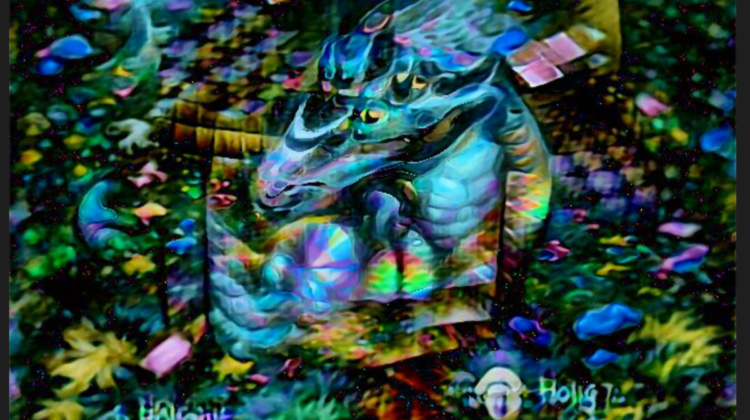
It’s a drab Monday morning in 2018, and as I habitually navigate my way to the facebook app on my phone through tired and half open eyes, I have no idea that what I will see will change the course of my life. Sounds dramatic I know, but let me explain.
The night before, my friend Violet had posted a link to my profile, and as I scrolled through my notifications I saw the headline: “Is artificial intelligence set to become art’s next medium?”. It had my attention. I studied Fine Art as an undergraduate, and was a tattoo artist at the time. The notion that artificial intelligence could make art was brand new to me, and a little startling. What even was an algorithm? It wasn’t my job to know back then.
I eagerly click the link to find an article posted to the Christie’s Auction House website, discussing a piece of art generated by an algorithm that sold for $432,500. Mind blown. I’m in further awe after seeing that the piece is signed in the bottom right hand corner with a piece of the code used to generate the piece! No way. Thoughts start racing through my head, how is this possible? How could AI make this? What is AI? Is a computer an artist? Are the coders the artists? This is the moment my love affair with generative deep learning began.
A computer science conversion masters, and having started a Games and AI PhD, here we are. I’m still obsessed with the digital media that generative machine learning algorithms can produce, and I’m basing my entire PhD project around this.
It turns out that a hell of a lot of resources have been spent on getting machine learning algorithms to produce the most perfect novel output possible based on the data set they are trained on. An algorithm named: ‘StyleGAN2’, developed by researchers at NVIDIA, produces faces of people that don’t exist – and it’s very difficult to tell them apart from real people. Take this guy for example, I just snapped him up from the website dedicated to generating such images:
He doesn’t exist, but meet William. He is in his early 30’s and has a good career as a software engineer. He likes to game in his spare time, mostly MMORPG’s, and is a proud Dungeon Master to his weekly Dungeons and Dragons session held with friends he has known since school. He also has a cute black and beige pug named Corden, named so because he loves the show ‘Gavin and Stacey’ SO much.
So you see. The possibilities are endless.
Newer generative models allow us to input text and image prompts into the algorithm to start with, which helps to guide what is produced. Recently I have been experimenting using a model called ‘Big Sleep’ by Ryan Murdock and also a combination of OpenAI’s CLIP + SIREN models by Vadim Epstein. Here are some examples I have made using these models (the prompts given to the algorithm are shown underneath each image):
These images are not perfect representations of the given prompts, but they are really interesting in spite of this…maybe even because of this. As a tattoo artist, if a client had come to me and asked for a piece that incorporated a colourful dragon, there is a lot of fodder here for inspiration, especially in terms of the form, shape, line and colour of the images.
Even the videos that show the training process are as intriguing as the final output. The prompt here was a H.R. Giger artwork:
For all of the writers and poets out there, don’t despair. Generative machine learning doesn’t just produce novel images and video, it can also write. An impressive example of an implementation of this capability is AI Dungeon, which uses the capabilities of OpenAI’s GPT-2 generative language model in an ingenious way, incorporating the generated text output in to an infinite dungeon crawler style role play game. Just you and an AI, on a mission to save a white knight from an evil princess or whatever it is that takes your fancy.
My PhD project is focused on harnessing the novel and ‘imagination provoking’ properties of this kind of output, into an application that can be used to support creative processes such as ideation and visualisation. I propose that such an application could be used by creative professionals and casual users alike to provide inspiration, but also to allow a closer look at what these algorithms are capable of and how our interactions with them can shape creative projects in novel and interesting ways.
If you are a creative person reading this, or have an interest in interacting with this kind of media via an application — what would you like to see from a tool that can create brand new images, video and text?
